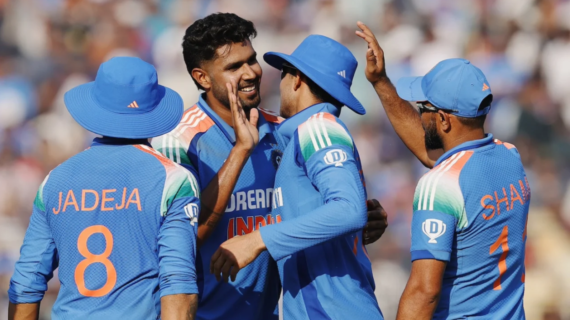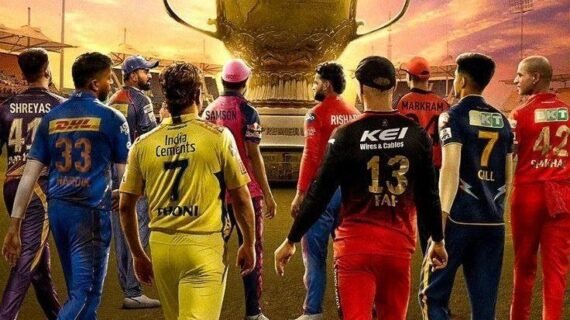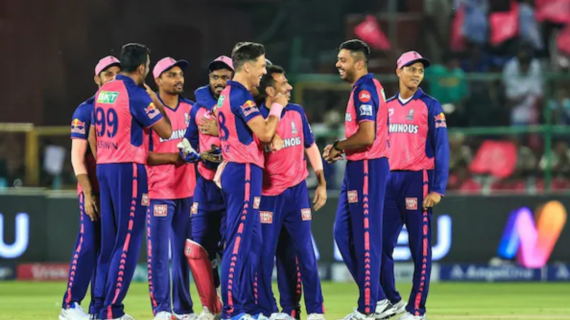Now Reading: The Future of IPL: Business Strategies and Predictions for 2025
-
01
The Future of IPL: Business Strategies and Predictions for 2025
The Future of IPL: Business Strategies and Predictions for 2025

Overview of IPL’s Current Business Model
The Indian Premier League (IPL), established in 2008, has notably evolved into a formidable brand within the realms of sports and entertainment. As of 2023, its business model exemplifies a multifaceted approach to generating revenue, leveraging various streams that include broadcasting rights, sponsorship deals, ticket sales, and merchandise sales. The IPL’s strategic initiatives have transformed cricket from a traditional sport into a lucrative business venture.
One of the most significant revenue sources for the IPL is its broadcasting rights. The league has successfully negotiated multi-billion dollar television and digital streaming deals with leading networks and platforms, ensuring that matches reach a global audience. These deals are pivotal in attracting not only television viewership but also sponsorships from various industries, further bolstering the financial viability of the league.
Sponsorship deals also play a crucial role in the IPL’s financial model. High-profile brands across diverse sectors, such as beverage companies, technology firms, and automobile manufacturers, enthusiastically invest in sponsorship opportunities, recognizing the league’s vast reach and appeal. Consequently, the IPL attracts significant financial backing, enhancing its capabilities to attract top talent and maintain a competitive edge.
Furthermore, ticket sales contribute to the IPL’s revenue, with franchises benefiting from sold-out stadiums during matches. The atmosphere in the stadiums, combined with the league’s high-profile nature, drives attendance and ensures a comprehensive match-day experience for fans. Merchandise sales, including team jerseys and memorabilia, also provide an additional revenue stream, turning passionate followers into brand ambassadors through their purchases.
Overall, the IPL’s innovative business model has not only reshaped the landscape of cricket in India but has also created a lucrative platform for stakeholders, thereby attracting viewers, sponsors, and players worldwide. As the league continues to grow and adapt to changing market dynamics, its ongoing evolution will undoubtedly leave a lasting imprint on the sports business sector.
Key Trends Shaping IPL’s Business Landscape by 2025
As we look toward IPL’s future in 2025, several key trends are set to redefine its business landscape. One of the most significant trends is the rise of digital streaming platforms. The traditional modes of viewership are being overtaken by online services that provide flexibility and accessibility to fans worldwide. This shift towards digital streaming not only creates new revenue channels through subscription models but also emphasizes the necessity for the IPL to form strategic partnerships with prominent streaming services. This approach enables deeper penetration into international markets, which is essential for the league’s growth.
Another vital trend is the integration of advanced technology to enhance fan engagement. The adoption of innovations, such as augmented reality (AR) and virtual reality (VR), allows fans to enjoy immersive experiences that bring them closer to the action. These technologies can be utilized not only during live matches but also on digital platforms, encouraging fan interactions and improving loyalty. Furthermore, data analytics will enable franchises to tailor marketing strategies based on audience preferences, thereby increasing overall engagement.
Sustainability practices are gaining traction across various sectors, and sports leagues are no exception. The IPL is likely to place greater emphasis on sustainable operations, from eco-friendly stadiums to reducing the carbon footprint of events. This commitment will not only resonate with the growing environmentally conscious consumer base but also attract sponsors looking to align with sustainability initiatives.
Moreover, evolving consumer behavior significantly impacts viewership patterns and sponsorship deals. As fans become more selective with their time and expenditures, IPL must adapt its business strategies to meet these changing preferences. This includes enhancing the overall match experience and developing community-focused initiatives to strengthen local ties, ultimately ensuring that IPL remains relevant in a rapidly shifting market.
Predicted Financial Growth and Revenue Expansion Strategies
The Indian Premier League (IPL) has established itself as one of the most lucrative sporting leagues in the world, and financial growth projections for 2025 indicate a promising horizon. The IPL’s revenue model is anticipated to expand significantly through various strategic initiatives. By leveraging its massive fan base and global appeal, the league is likely to emphasize international market expansion as a pivotal aspect of its strategy. This could involve organizing matches or exhibition games in major markets outside India, thereby attracting new fans and sponsors. Such initiatives may not only increase match revenue but also enhance merchandise sales in untapped regions.
Moreover, the IPL teams may explore diversifying their content offerings to enrich the overall viewer experience. This may include developing engaging digital content such as behind-the-scenes footage, player interviews, and interactive fan experiences. By fostering a closer connection with audiences, teams can stimulate long-term engagement and loyalty, which is essential for sustainable growth. In addition, creating a subscription model for exclusive content could provide a direct revenue stream, appealing to dedicated IPL followers who seek a more in-depth connection with their favorite players and teams.
Moreover, as the digital landscape continues to evolve, enhanced digital presence will play a crucial role in the IPL’s financial expansion. This might involve partnerships with digital platforms for live streaming, and exclusive online content that attracts a global audience. Furthermore, implementing advanced data analytics to understand fan preferences and behaviors could lead to more effective targeting and tailored advertising strategies, maximizing revenue from sponsorships and partnerships.
In summary, the financial growth of IPL by 2025 will likely rely on strategic international expansion, diversified content offerings, and a robust digital strategy, positioning the league for continued profitability and sustainability in an increasingly competitive sports market.
Challenges and Opportunities for IPL in 2025
The Indian Premier League (IPL) stands at a pivotal point as it looks towards 2025. While the league has experienced tremendous growth and popularity, it faces several challenges that could impact its trajectory. One prominent challenge is the increasing competition from various sports leagues around the world. The rise of global franchises and international leagues can divert both viewership and sponsorship, potentially diminishing the IPL’s market hold. The demand for premium sports content may dilute fan loyalty, necessitating strategic adaptations to maintain its competitive edge.
Another challenge on the horizon is regulatory changes. As the IPL operates in a highly scrutinized environment, shifts in governance or policy concerning player contracts, broadcasting rights, or sponsorship regulations could significantly affect its operational framework. This requires the league to stay agile and compliant to navigate the rapidly evolving landscape of sports governance.
Market saturation also presents a concern; with an abundance of sporting events vying for attention, maintaining viewership interest becomes paramount. As consumer preferences evolve, particularly among younger audiences, the IPL must innovate and redefine its offerings to remain relevant and appealing.
However, along with these challenges come numerous opportunities for growth. Strategic partnerships could pave the way for enhanced experiences, allowing the league to tap into new markets through collaborative events or co-branded initiatives. Innovations in player contracts, such as performance-based incentives, may attract top talent while managing expenditures.
Furthermore, fan engagement initiatives present a significant avenue for growth. Leveraging digital platforms to enhance interactive experiences can foster deeper connections with audiences, encouraging loyalty and participation. As the IPL progresses into 2025, balancing these challenges with strategic opportunities will be essential for sustaining its unprecedented success in the competitive sports landscape.




























